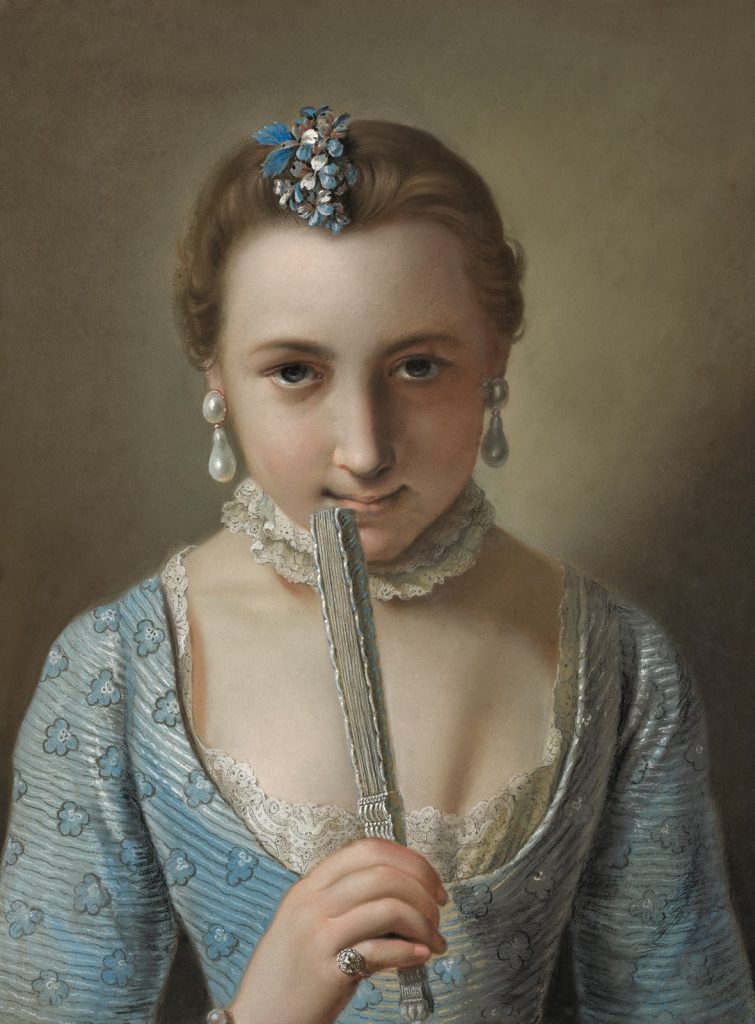Pietro Antonio Rotari
(Verona 1707 - 1762 St. Petersburg)
Girl with a Fan
Pastel on paper, laid down on canvas, 46 x 37 cm
In the original mount and carved gilt frame
Provenance:
German private collection.
Pietro Antonio Rotari, an outstandingly gifted artist and courtier of abundant social intelligence, was very much a child of his time. He gave the offspring of royalty instruction in drawing, he was an avid letter writer, and he would occasionally give away a painting when he scented personal advantage. In 1749, he was invested with the title of Conte dal Senato Veneto by the Venetian Republic. His work was highly sought after by the leading courts of Europe and he ended his career as court painter to Elizabeth I of Russia.1
The teasing gaze of the young woman looking directly at us can be read as an erotically charged game instead of a traditional portrait. Both viewer and subject abandon themselves to the illusory game of observing and being observed, to the extent that image and reality become blurred. Gallantry, an integral part of courtly life, also found its way into art, particularly in the Rococo period.
An almost identical composition by Rotari is preserved. It hangs in the ‛Rotari hall’ at Peterhof Palace in St. Petersburg. The model’s prominent drop earrings with their large baroque pearls add a sensuous dimension to the work – pearls are often associated with Venus. But they also underline her social status and may even be intended to allude to Rotari’s particular interest in jewellery, which his friend the comte de Wackerbarth in Dresden described: Rotari is no ordinary artist who sells his pictures for money, he shows greater willing to part from them in exchange for wondrous gifts or jewels. The most ‛wondrous gift’ that Rotari is reputed to have received was a portrait miniature of King of Poland August III bordered by gemstones.2
Pastels enjoyed exceptional popularity at the courts of Europe in the eighteenth century. The medium combined the vibrancy of drawing with the coloristic qualities of oil painting. The velvety surface was ideally suited to imitate the textures of skin and fabrics. Even in poor light, pastel color retained its extraordinary intensity. The leading eighteenth-century exponent of the medium was almost certainly Jean-Etienne Liotard (1702-89), whom Rotari met in Vienna when both artists were working on commissions for the Imperial Court. Since only very few of Rotari’s pastels have survived, this masterly example, preserved in its original frame, is of unquestionable rarity.
1 Gregor J. M. Weber, Pietro Graf Rotari in Dresden. Ein italienischer Maler am Hof König Augusts III. Bestandskatalog anläßlich der Ausstellung im Semperbau, exhib. cat., Dresden, Gemäldegalerie Alte Meister, Emsdetten and Dresden 1999, pp. 7-15.
2 For biographical details, see Weber, op. cit., p. 9.

